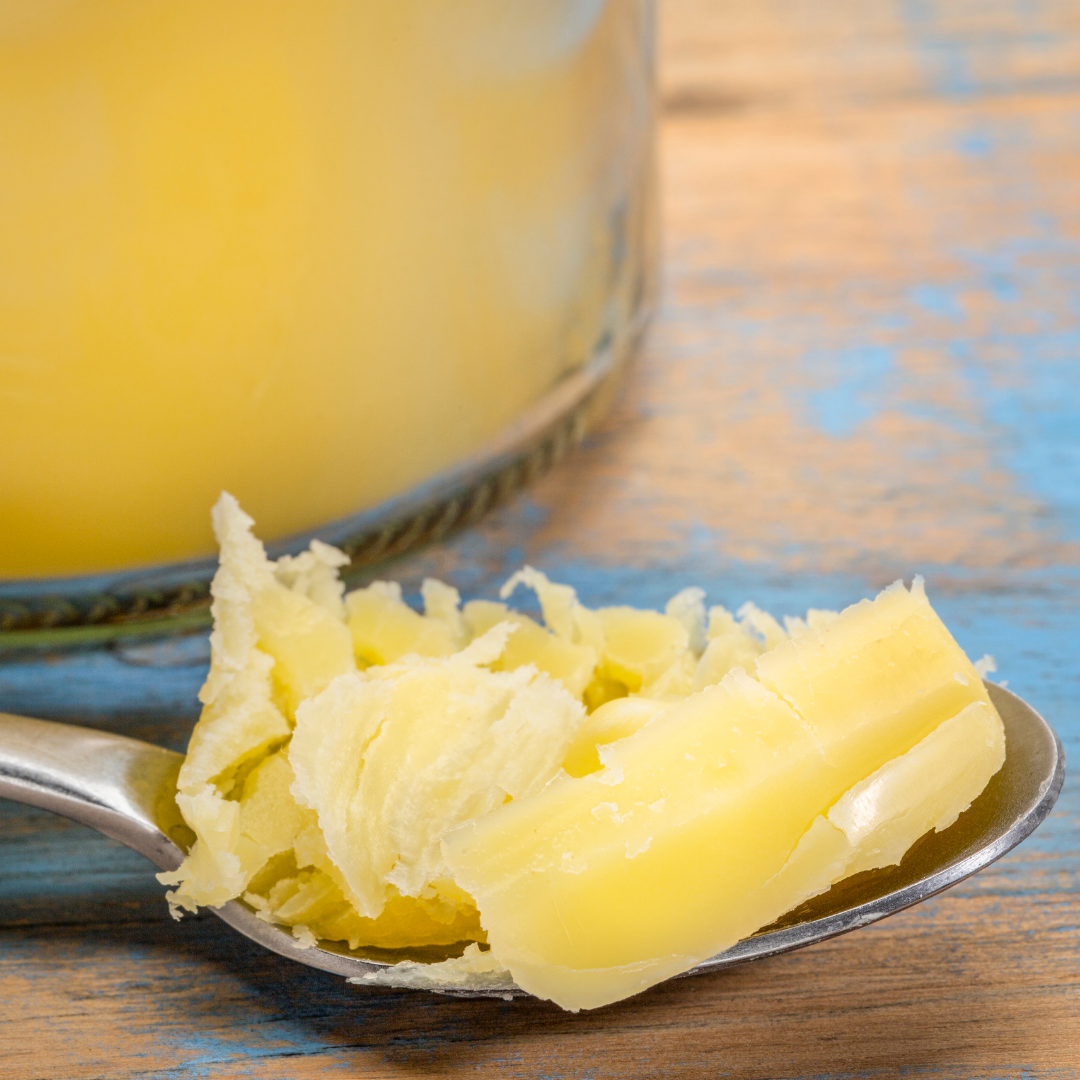Pregnancy and Motherhood in Ayurveda by Dr. Scott Gerson
Ayurveda places an enormous emphasis on the importance of caring for the mother before, during, and after pregnancy. 'It is the woman who procreates children and propagates the human species. Dharma (righteousness), artha (wealth), lakshmi (auspiciousness), and loka (the entire universe) are represented in every woman.' (CS, Cs 2/3) Ayurveda regards the woman and her ability to produce and care for children as the basis of family life which, in turn, is the very foundation of society. Therefore, only if the women of a society are safe, protected, and content can these qualities manifest in that society.
Ayurveda prescribes specific nutritional measures for the growth and protection of the woman to keep her vital and pure. In one of its most famous teaching analogies, Ayurveda compares human conception to the germination and sprouting of a seed and its transformation into a sapling. When the male and female seeds unite and the soul enters the union, an embryo (garbha) is created. Ayurveda gives great importance to the quality of the seed (ovum). In addition to the female seed, the mother also provides the 'ideal terrain' (i.e. the uterus) into which the seed is to be planted. Guidelines for correct sexual intercourse are also generally outlined. Young women less than sixteen years of age and boys under twenty should not bear children. Nature does not support pregnancy nor family life begun during the brahmacharya period (student years, ages birth to 20).The general rules of pre-natal care are also given and are perhaps the most provocative of all. The husband, parents, siblings, and other family members are advised to oversee the pregnant woman's diet and encourage activities that are healthy and enjoyable to her and beneficial for the child developing in her body. Similar to its strategy to promote longevity, the Ayurvedic approach towards motherhood, that is pregnancy and childbirth, is indeed a holistic one. Ayurvedic recommendations touch upon the diet, behavior, activities, and even the spiritual actions of not only the mother but the entire family into which the child will be born.
Garbhini Vyakarana (lit. Development of the Embryo)
The wisdom regarding the general management of pregnancy is found in both the Charaka and Sushruta Samhitas under the subject of “Garbhini Vyakarana”. There are separate chapters for general management, specific management, diseases in pregnancy and their treatment and many other practical pieces of advice . Guidelines regarding diet, activities, behavior and mental activity (ahar, vihar, achar and vichar, respectively) are also detailed. The physician is cautioned to be very vigilant during the management of pregnancy. 'If a cup filled with oil right up to the brim is to be carried without spilling even a single drop, every step has to be taken with care'. (CS Cs 8/22) Ayurveda advises the same degree of care and attention in the management of a pregnant woman. The goal is the protection and nourishment of both the growing fetus and the mother.
The concept that improper decisions and lifestyle are responsible for the genesis of disease is a well-known Ayurvedic idea. Crowded urban living in particular has been cited in the Charaka Samhita as causing disease and shortening lifespan. (CS Cs1/1) From the moment the pregnancy is confirmed, the woman is counseled to follow certain guidelines of living. The Ayurvedic physician gently offers supervision from the very beginning, even before the actual conception of the child, so that the pregnancy can terminate in a normal delivery after a normal period of gestation. Especially when she approaches full term, critical care is necessary as “one foot is considered to be in this world and the other in the world of Yama” (the god of death). Complete and healthy delivery includes delivery of the placenta. If the delivery is not complete and normal, the woman is likely to be affected by one or the other of a list of 64 maladies, which are described in detail in Garbhini Vyakarana.
For a couple to produce healthy offspring, both the partners should be careful about their diet, activities, behavior and emotional status before as well as after conception. One has to keep this in mind throughout the pregnancy.
General Rules from Inception of Pregnancy to Delivery
The mother-to-be should:
Try to maintain a cheerful mood
Be clean, neat and well dressed
Dress in simple clothes and ornaments
Engage in peaceful and benedictory activities
Sleep under a roof in a clean environment (not infested with insects such as mosquito's etc.)
Not touch or contact maimed or deformed persons
Avoid long walks
Not indulge in anger, fright, or other agitating emotions
Refrain from the use of cosmetics and constant cleaning of the body
The food she eats should be delicious to her. Much of the diet should be in a liquid or semi-liquid form, moist, nourishing, enriched with all the six rasas (tastes) and supplemented with deepana (agni promoting) plant medicines and spices which are known to increase appetite and digestive power. Ayurveda specifically mentions the following foods as healthy during all trimesters of pregnancy: rice, milk, wheat (godhuma), amalaki fruit, raisins, grapes, mango (amra) butter, ghee, and small quantities of raw sugar (sarkara).
She should also avoid:
Excessive sex particularly during early and late pregnancy
Overeating or fasting
Speaking in a loud voice
Sleeping during the day time and staying up late at night
Tight clothes and tight belts
Words or sights which give rise to feelings of sorrow, anger, fear or pain
Traveling in a vehicle on rough roads
Squatting for a long time or sitting in an uncomfortable position or on a hard surface
Lifting heavy things or remaining in a bending position for a long time
Oleation massage etc. unless positively indicated
Withhold natural urges unless in an emergency
Dry, stale, fermented, heavy, hot or strong food, alcohol and meat (fish is allowed)
Visiting abandoned and remote places
Leaning into a deep well
Specific Effects of Poor Habits and Behaviors
Cause & Effect
Traveling on horseback - Premature Birth
Looking into wells or ditches - Premature Birth
Hearing excessive noise - Premature Birth
Remaining too often on one´s back - Umbilical cord twisted
Sleeping outdoors or going out at night - Insanity
Indulging in quarrels and fights - Epilepsy
Always grieving - Timid and under-developed child
Thinking ill of others - Envious or lesbian daughter
Stealing - Wrathful or indolent child
Sleeping constantly - Unwise child with poor digestion
Excessive pork - Red eyes, respiratory problems
Excessive fish - Eye problems
Garbhini Parichaya
The development of the fetus in the uterus is discussed in the Charaka Samhita in the section called Garbhava Kranti, and special regimens are prescribed for each month in the subsection Garbhini Paricharya. The basic wisdom to be understood is to take greater care during the first three months of pregnancy and during the eighth and ninth months.
During the first trimester, stress is laid on stabilizing the pregnancy and nurturing the uterine bed through rasa and rakta dhatus. The embryo gets nourishment directly by percolation (upsnehan). Hence more jaleeya (liquid) substances such as juicy fruits, coconut water, milk, and so on are advocated.
In the first month, sipping cold milk along with meals and eating only in the morning and evening (i.e breakfast and dinner). Tandulodaka (lit.water from rice washing; e.g. modern equivalent: rice milk) During the second month, the intake of warm milk decoctions medicated with sweet herbs like Vidari, Sarkara (Cane juice), Shatavari, Yasthimadhu, Brahmi, all of which are jivaneeya (life-supporting) and garbhasthapak (helping maintain implantation). Honey and ghee are also recommended. During the third month Ayurveda recommends warm milk with added honey and ghee. Also, the ground rind of amalaki fruits with coldwater.
During the fourth month, the head, torso and extremities start to become differentiated, the motor and sensory nervous tissues start to develop, the heart takes its place, and the fetus makes known its needs and desires via the mother's physiology. This is the period when the woman craves for certain foods and tastes. Normally, the needs of both the fetus and the mother are the same. Therefore, Ayurveda recommends that the mother´s cravings be fulfilled as far as possible, as long as they are not absolutely unreasonable (i.e. a diabetic mother craving excessive ice creamæ a hypertensive mother craving excessive salt, etc.). Shankhpushpi, gulkand, and brahmi help in calming the nerves and are also good prajasthapans (maintainers of pregnancy).
From the fifth to the seventh months, plant preparations which give strength to the uterine muscles and nourishment to the embryo, are advised. Ashwagandha and Guduchi are particularly good in this regard. They help to ensure optimal condition of the placenta and uterine tissues as well as of the umbilical cord. The diet should be one of rice, milk, butter and gee. Fruits which are orange or yellow in color are advocated such as mangoes, apples, carrots, amalaki etc. Leafy vegetables are also advised. During the seventh month, hairs form on the fetus and the abdominal skin begins to become stretched giving rise to itching and striations (kikkisas). This can be treated by taking sips of the infusion of jujube berries or butter medicated with manjistha, the application of the pulp of sandalwood and lotus or of a paste made of neem, turmeric and manjistha, or oil medicated with tulsi leaves or jasmine.
From the eighth month forward, there should be less fat, less salt and less water in the diet. Ayurveda recommends rice kanji cooked in milk with a little ghee. After the completion of the eighth month, herbs which are mild diuretics and urinary antiseptics, such as punarnava, gokshuru and sariva, are advised. Fennel seed powder in small quantities is also recommended for its mild carminative and anti-spasmodic actions.
As soon as the pregnant woman enters the ninth month, she is supposed to move to the Sootikagar (delivery area) which is specially prepared for delivery. The door should be facing to the north or east. After an asthapan basti (simple enema), she should undergo anuvasan basti (retention enema of oil boiled with sweet herbs) which may be repeated. A swab soaked in the same oil is used to anoint the vagina and supporting structures to make the pelvis soft and elastic and enhance the downward-moving functions of apana vayu and delivery of the fetus. The mother´s complexion becomes rosy, her strength returns as she prepares for the final days of pregnancy.
In the middle of the ninth month with a waxing moon in conjunction with an auspicious star, pacificatory oblations to fire, cow, and Brahmins (priests) are performed. Grasses and honey are offered to the cows; barley, fruits, and flowers to the Brahmins. The Brahmins then recite prayers and mantras as the woman enters the delivery area and awaits her delivery.
Sootikagar (Delivery area)
The Sootikagar should be such as to meet seasonal needs. The type of land, the timber used for the building, the architectural layout of the area (the bath room, toilet, kitchen, fire place, delivery room), the type of fire wood used, the water supply and so on are described in detail. (CS Ss 8/33) Materials such as linen, tampons, needles and instruments, essential drugs and furniture are also specified. The house should be fumigated to make it free from insects. Porous bags containing rakshoghna drugs (to kill or repel insects and invisible evils) should be suspended all around - at the entrance and in the corners of the room. These drugs include calamus, asafoetida, garlic, Guggulu, Kathaka and Sarshapa.
The nurse or birth attendant recommended by Ayurveda should have had children herself, should be experienced, friendly, alert, expert, affectionate by nature, and free from anxiety. The attending physician should be an expert.
Treatment Of Diseases During Pregnancy
Any disease occurring in a pregnant woman should be treated with drugs that are mild in action, compatible and safe to the fetus. Panchakarma (detoxifying procedures) should not be advocated, except basti (enema) in the eighth and ninth months of pregnancy.
Ayurveda also describes nine diseases, which are caused because of the pregnant status of the woman. These diseases are peculiar to pregnancy and are called garbhopadravas. Their specific treatments are also elaborately described. They are:
nausea
anorexia
vomiting
dryness of mouth
fever
edema
anemia
diarrhea
retention of urine
As far as possible, medication should be avoided during the first three months of pregnancy. Only symptomatic treatment with very mild herbs and a suitable diet should be offered. The physician is advised to take into account the severity of the disease, the resistance power of the mother and the stage of the pregnancy, and choose the middle path so that the disease or the treatments do not result in complications for the mother or the fetus. For example, the use of Dashamularishta in vattic fever, hima (cold infusion) of Yastimadhu, lotus and Sariva in paittic fever and Guduchi kwath in kapha fever to bring down temperature. Similar special treatments are advised for other diseases. Several substances are absolutely contraindicated in pregnancy such as vacha (calamus root), kumari (aloe), or myrrh and substances like garlic and hing are to be used with extreme caution if at all.
Different types of obstructed labor and their management with maneuvers, especially internal rotation, are also described in this section. However, if the physician realizes that the disease is going to endanger the life of the mother and there is no other remedy, the pregnancy should be terminated without delay.
As we can see from this article, the wealth of ancient Ayurvedic wisdom included the holistic principles of safe and healthy motherhood. Its goals were the same as our modern obstetric physicians: proper formation of the embryo, fetal development without anomalies, a comfortable full-term pregnancy, a timely and non-traumatic delivery, and maintenance of the health of the mother. Given the achievements of 21st century technological and medical sciences and a more detailed and sophisticated understanding of the physiological processes, modern medicine has made great strides in promoting healthy pregnancies. Today we can now recognize and treat many pathological conditions in the fetus or the mother. We also recognize the importance of regular antenatal check ups to detect any changes as early as possible and take appropriate medical interventions. Yet, although it lacks the technological sophistication of modern obstetrics, Ayurvedic wisdom can certainly contribute to this field in important and meaningful ways.









